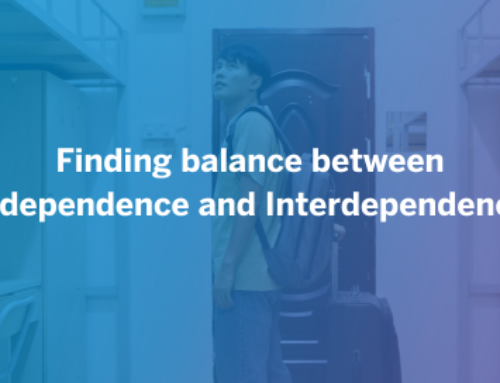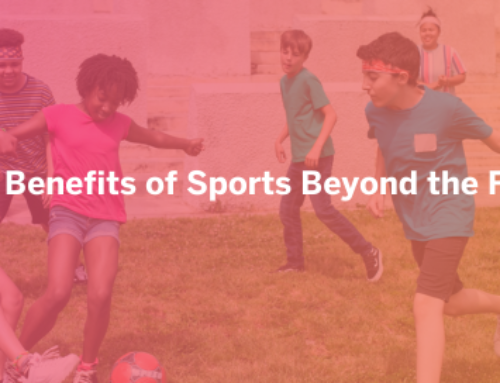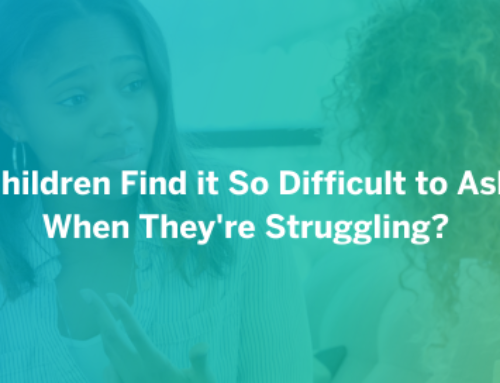
Students frequently approach after our presentations to ask for help with peer pressure, mental health, or addiction. About half of these students admit that they have never discussed their issue with anybody before. They have struggled and suffered in silence. They are spontaneously ready to open up to a stranger after a presentation during their P.E. class but have long been unwilling to ask for help from those available to them. The cause of their silence and secrecy is the focus of this blog: what prevents students from asking for help? Their disclosures after our presentations reveal that whatever their problem, they trust that we will listen with open ears and a kind heart. However, students frequently have not granted any other adult this level of trust. This level of trust, for some students, has not been granted to anybody in the world. These powerful conversations with students leave me wondering how many others needed help but, for some reason, never approached.
While the primary goal of our prevention programming is educating students about the honest and precise impact of drug use, psycho-social education is equally important to our cause. We know that while research has revealed the powerful preventative impact of knowledge and open dialogue, it has also demonstrated that at the utmost levels of untreated loneliness, depression, isolation, and psychopathy, people tend to abandon their convictions, however, guided they may have been, and turn towards substances for relief. This has led to the addition of a variety of mental health presentations to our programming.
However, we are aware that knowledge and awareness are not enough to help children through their struggles. Help-seeking and engagement with supportive peers and adults are necessary preconditions for treating the many mental issues that are comorbid with substance abuse. The prevention cause should thus place a strong emphasis on addressing the many barriers to help-seeking, including but not limited to: fear of punishment, peer pressure and isolation, stigma and shame, lack of awareness or access, parental or family barriers, lack of trust, lack of education, and lack of resources.
The primary strategy adopted by LSIS when addressing barriers to help-seeking is the implementation of early intervention and prevention curriculums. Research has demonstrated a variety of protective factors associated with social-emotional learning education and substance abuse prevention programming. Some of these include helping students develop and identify coping skills, assisting students and teachers with early identification of mental health concerns, and beginning the fight against stigma at an early age.
Discussing with elementary students the nature of my early experiences with lying, loneliness, and struggling in school is my favorite portion of my prevention message. I love talking about it because I never heard about these issues as a child. This was a major barrier to my seeking help. I didn’t know that these issues were common, identifiable, and a shared part of the human condition. I didn’t have a name for my experience. I didn’t know how to cope with these issues. The negative coping skills that I selected were driven by my own belief that my issues were not something that an adult or peer could help me with. The combination of stigma and ignorance played a large role in my eventual decision to run away from my problems, and towards those who defied the rules and abused substances to run away from theirs.
Beginning the conversation in a constructive manner and at an early age directs children to instinctively respond to their internal struggles as something worth talking about and sharing. It teaches them that peculiar experiences, strong and confusing emotions, intrusive thoughts, and uncomfortable habits make them legion and not a stranger among normal folk. It may even allow them to be of service to others who struggle with similar issues. I certainly have found that leaning into these issues rather than ducking away has allowed me the opportunity to help others through their issues. I wish that 3rd grade me knew this information.
Through our programming, whether it is mental health presentations with young students or family boxes meant to guide parents through opening up the discussion, we seek to destigmatize struggles with mental health and substance abuse and promote open dialogue. However, the stigmatization of substance abuse and the commonplace responses of shaming and punishment may lead students who have already begun to struggle with addiction to remain silent. Simply put, if students are faced with a forced choice of either using drugs in secret or facing severe punishment and shame, then there is not much we can do as adults and educators to help them.
Fear of punishment is a serious barrier to help-seeking. Our collaborative, open, and vulnerable tone around these sensitive issues allows students the comfort to admit their struggles. Students are visibly surprised by the approach that we take. They hear that instead of class that day there will be a vaping, addiction, or drinking presentation, and they expect to be scolded and spoken at. It is this tone that caused my friends and me to suffer in silence, with help coming only from our equally-lost friends, if from anyone. To come clean to an adult meant to invite all of one’s peers into the firing line of punishment and skepticism.
Developmental research has demonstrated the necessity of a sociable approach to rebellious behavior in adolescence. A fundamental and universal process that has been demonstrated through longitudinal studies is that adolescents begin to devalue the guidance of adults in favor of their peers, with whom they spend the majority of their time. Neurobiological developments lead to decreases in reward response to the voices of adults, and a decreased emotional stimulation in response to reprimand. Authoritarian rearing leads to secrecy and rebellion in search of faux autonomy.
It is thus incumbent upon educators to engage with children with the friendliness and amiability that their friends grant them when discussing such sensitive topics. Combining an earnest message with a lighthearted and friendly tone is a skill that must be honed and trained. I have seen firsthand that even one discussion conducted in this way can open the door for students to begin disclosing their struggles. If adolescents feel they are being spoken down to by people who don’t like them, they will not listen.
This attitude may involve system-level changes as well. Increasing the level of open dialogue around these issues in the school system sets the stage for this form of level-headed dialogue. Community mental health providers and school counselors, with all the amazing work they do, can’t be the only people willing to engage with a rebellious child openly and without reprimand. I have had many promising experiences during our presentations. The dialogue around mental health is growing substantially, and I am happy to be a part of it. Students can identify signs of anxiety and ADHD in my story, as well as the utility and necessity of therapy and help-seeking. These were subjects I was entirely unaware of as a student. When I reached high school, I was still under the impression that mental health issues made me ‘different’ and that therapy and medication meant I was weak. These solutions to help-seeking barriers were not in place, and I suffered the consequences.
Addressing barriers to mental health and substance abuse help-seeking in K-12 students requires a comprehensive and coordinated approach that involves all stakeholders, including students, families, school staff, and community partners. Those issues that we can’t directly address as adults, such as fear of social isolation and judgment, can only be worked on through honest dialogue. Honest dialogue can only begin with trust. Teachers, counselors, principals, and parents must assess how trustworthy they seem to even the most obnoxious of students. Fostering this environment requires a combination of early intervention and prevention, destigmatization, and system-level changes in how we communicate with children. By adopting these strategies, schools can help to create a more supportive and inclusive environment that empowers students to seek the help they need.
By: Danny Z
Danny is a in house LSIS Prevention Speaker.








Leave A Comment